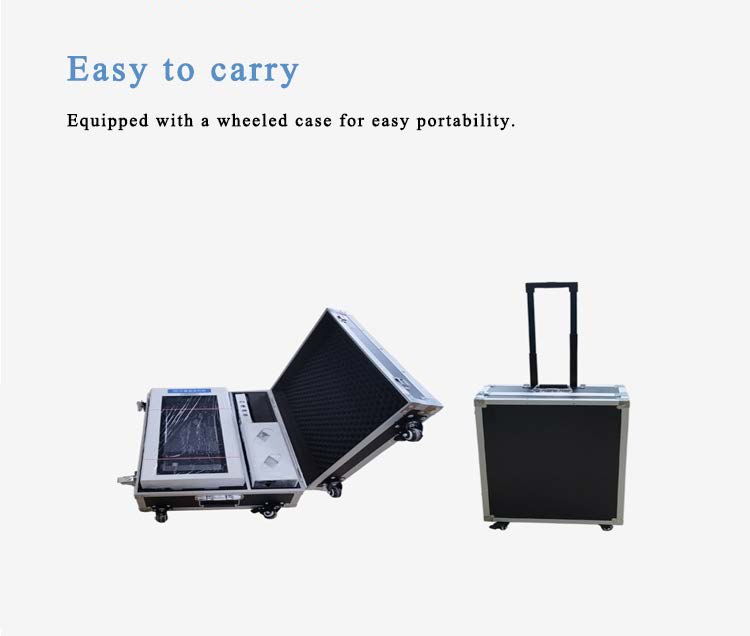In modern society, more and more people are paying attention to foot health. Whether it’s a work environment that requires long periods of standing, ill-fitting shoes, or improper posture during exercise, all of these can negatively affect our foot health. Many people are experiencing issues such as collapsed arches, flat feet, high arches, or other foot shape problems, which gradually become significant factors affecting their daily quality of life. As an effective foot health aid, corrective insoles are gaining increasing popularity. However, in order for corrective insoles to truly work, they must rely on accurate foot shape data, which is exactly the core advantage of the foot sole 3D scanner.
The foot sole 3D scanner is an innovative high-tech device that provides precise data support for the design and production of corrective insoles by quickly scanning the foot’s shape and pressure distribution. Compared to traditional measurement methods, the foot sole 3D scanner captures foot information more efficiently and accurately, making it an indispensable tool in corrective insole design.
The foot sole 3D scanner is not only a symbol of technology but also a powerful tool for enhancing foot health management. By understanding foot shape features and pressure distribution in detail, it provides scientific support for the creation of personalized corrective insoles, allowing users to experience truly comfortable and healthy solutions.

What are corrective insoles?
Corrective insoles are designed specifically to adjust the mechanical structure of the feet. Their main functions include:
- Supporting the arches and distributing pressure;
- Adjusting gait and improving poor posture;
- Relieving foot pain and preventing fatigue;
- Assisting in the treatment of foot diseases, such as plantar fasciitis or flat feet.
However, not all corrective insoles can perform these functions effectively. The effectiveness of the insoles largely depends on how well they match the foot shape. Traditional manual measurements or foot moldings often have errors and cannot achieve an accurate fit. The introduction of the foot sole 3D scanner perfectly addresses this issue.
How does the foot sole 3D scanner help in making corrective insoles?
Accurate Capture of Foot Shape Data
The foot sole 3D scanner uses laser or optical technology to scan the foot’s shape with high precision. It can record details such as foot curvature, arch height, and other features, providing reliable data for corrective insole design.
Comprehensive Analysis of Foot Pressure Distribution
With the foot sole 3D scanner, you can clearly see how pressure is distributed across the foot. For example, areas with excessive pressure might lead to discomfort, and this data can help designers optimize the insole’s support structure to distribute the pressure more evenly.
Combining Dynamic and Static Data
Some advanced foot sole 3D scanners support not only static scanning but also the recording of dynamic pressure distribution while walking or running. This dynamic data is essential for designing corrective insoles that are better suited to real-life usage scenarios.
Enhancing Customization
Traditional corrective insoles often use a one-size-fits-all design, but the data generated by the foot sole 3D scanner enables true personalization. Every person’s foot shape is unique, and personalized insoles can best meet individual needs.
Reducing Production Costs and Time
Compared to manual production, using the foot sole 3D scanner greatly reduces measurement and adjustment time while lowering production costs and improving efficiency.
Case Studies of Corrective Insoles
Case 1: A Savior for Flat Feet
Ms. Zhang is an office worker who developed flat feet due to prolonged sitting, causing her arches to collapse. Through precise measurement with the foot sole 3D scanner, it was found that her foot pressure distribution was uneven, especially with high pressure at the heel and forefoot. Based on the scan data, the designer created insoles that supported her arches, relieving her foot pain and improving her overall standing posture.
Case 2: Comfortable Experience for High Arches
Mr. Li is a running enthusiast who experiences pain in the forefoot and heel due to high arches. After undergoing dynamic gait analysis with the foot sole 3D scanner, he had custom insoles designed to address the high arch issue. The insoles included additional cushioning in the forefoot and heel to help disperse pressure while running, reducing discomfort.
Unique Advantages of the Foot Sole 3D Scanner
High Precision
Traditional measurement methods struggle to capture the subtle differences in foot shape, but the foot sole 3D scanner provides millimeter-level high-precision data, laying a solid foundation for the design of corrective insoles.
Fast and Efficient
The scanning process only takes a few seconds, saving both the user and designer time and improving production efficiency.
Comprehensive Data
The device captures not only the foot’s shape but also analyzes pressure distribution and dynamic gait, providing all-encompassing data support.
Easy to Use
Users only need to stand or walk on the scanner without any complicated operation to complete the measurement.
Wide Range of Applications
In addition to corrective insole design, the foot sole 3D scanner is also widely used in shoe design, sports medicine, rehabilitation therapy, and other fields.
Why Choose the Foot Sole 3D Scanner?
The value of the foot sole 3D scanner lies not only in its technical capabilities but also in the health improvements and convenience it brings to users. With scientific data support, it ensures the precision and comfort of corrective insoles, allowing users to experience the benefits of truly personalized design.
Whether it’s ordinary consumers, athletes, or patients requiring rehabilitation, the foot sole 3D scanner provides high-quality foot health solutions. For designers and manufacturers looking to improve the efficiency of insole production, this device is an indispensable tool.
With its high precision, efficiency, and comprehensive data capturing ability, the foot sole 3D scanner has become the preferred tool in corrective insole design. It not only compensates for the shortcomings of traditional measurement methods but also opens up new possibilities for foot health management and product design.
